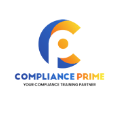Staying compliant with state labor laws is one of the most critical responsibilities for employers, especially in a complex regulatory environment like New York. With unique rules around overtime (OT) and paid sick leave, even small missteps in payroll compliance can lead to legal consequences and financial penalties.
Whether you’re an HR professional, payroll manager, or small business owner, understanding New York’s wage and leave laws is essential for running a compliant and efficient operation.
Let’s break down the key requirements and best practices for navigating New York’s payroll compliance, specifically focusing on overtime rules and the New York State Paid Sick Leave (NYPSL) law.



Understanding Overtime Laws in New York
1. Basic Overtime Rule
Under both federal (FLSA) and New York State labor laws, non-exempt employees must be paid 1.5 times their regular rate of pay for any hours worked over 40 hours in a workweek.
2. Who is Exempt?
While federal law provides exemptions for executive, administrative, and professional employees, New York applies similar but occasionally stricter standards. To qualify as exempt in NY, employees must meet:
- Duties test (type of work performed)
- Salary basis test
- Minimum salary threshold (currently $1,200/week for NYC, but varies based on location)
Tip: Employers must review job descriptions and compensation regularly to ensure exemption criteria are still being met.
3. Calculating the Regular Rate
The “regular rate” includes:
- Hourly wages
- Non-discretionary bonuses
- Commissions
- Shift differentials
It excludes:
- Discretionary bonuses
- Gifts
- Payments for time not worked (e.g., vacation)
Miscalculating this can result in back pay liabilities.
New York State Paid Sick Leave (NYPSL)
Effective since September 30, 2020, and enforceable from January 1, 2021, the NYPSL mandates that all employers provide sick leave, but the amount and type depend on company size and net income.
1. Accrual & Usage
Employees earn 1 hour of sick leave for every 30 hours worked. Leave accrual begins on the first day of employment and can be used after 120 calendar days (unless the employer allows earlier use).
2. Employer Requirements Based on Size
| Employer Size | Net Income | Type of Leave | Annual Minimum Leave |
| 0–4 Employees | ≤ $1 million | Unpaid | 40 hours |
| 0–4 Employees | > $1 million | Paid | 40 hours |
| 5–99 Employees | Any | Paid | 40 hours |
| 100+ Employees | Any | Paid | 56 hours |
Note: These are minimums. Employers may offer more generous policies.
3. Qualifying Reasons for Sick Leave
Employees may use sick leave for:
- Mental or physical illness (self or family)
- Diagnosis, treatment, or preventative care
- Domestic violence, sexual offense, stalking, or human trafficking support
Employers cannot request documentation unless more than three consecutive days are taken.
Payroll Compliance Best Practices
- Track Hours Accurately
- Use automated systems or software to record all hours worked.
- Ensure non-exempt employees aren’t working “off the clock.”
- Audit Employee Classifications
- Misclassification of exempt vs. non-exempt employees is a common compliance risk.
- Regular audits help prevent errors and legal exposure.
- Implement a Clear Sick Leave Policy
- Clearly outline accrual rates, usage rules, and request procedures.
- Ensure managers are trained on the policy and legal requirements.
- Maintain Payroll Records
- New York employers must keep payroll records for at least 6 years.
- These should include hours worked, pay rates, sick leave accruals, and usage.
- Stay Updated
- NY employment laws can evolve. Regularly consult with HR counsel or compliance resources to stay informed.
- NY employment laws can evolve. Regularly consult with HR counsel or compliance resources to stay informed.
Penalties for Non-Compliance
Failing to comply with New York’s OT or sick leave laws can result in:
- Wage and hour claims
- Civil penalties
- Interest on unpaid wages
- Attorney’s fees and potential class-action lawsuits
For instance, failing to pay overtime properly can lead to back pay claims stretching over six years, the full statute of limitations in NY for wage claims.
We understand that state-specific regulations like those in New York can be challenging to navigate. That’s why we offer Expert-led training webinars for payroll and accounting for your industry. Our resources are designed to simplify complex laws so you can focus on managing your team and growing your business, while staying compliant.
Final Thoughts
New York’s payroll laws demand precision and up-to-date knowledge. With strict rules around overtime and paid sick leave, businesses can’t afford to make assumptions or rely on outdated practices.
By understanding the specifics of New York law and implementing proper tracking, classification, and leave policies, employers can minimize risk and build a compliant, employee-friendly workplace.

